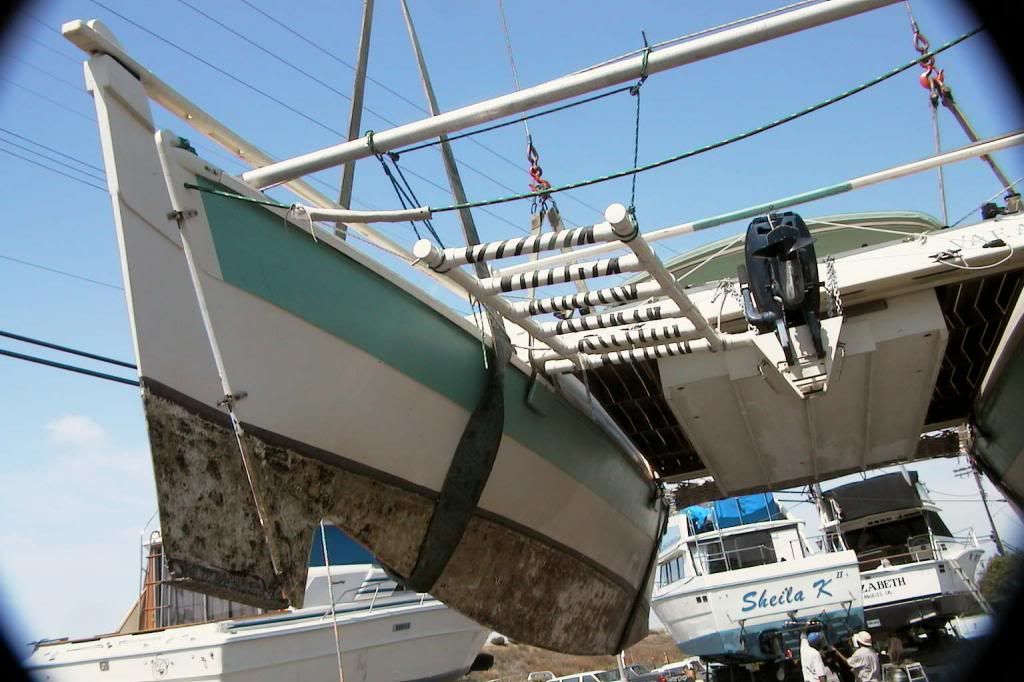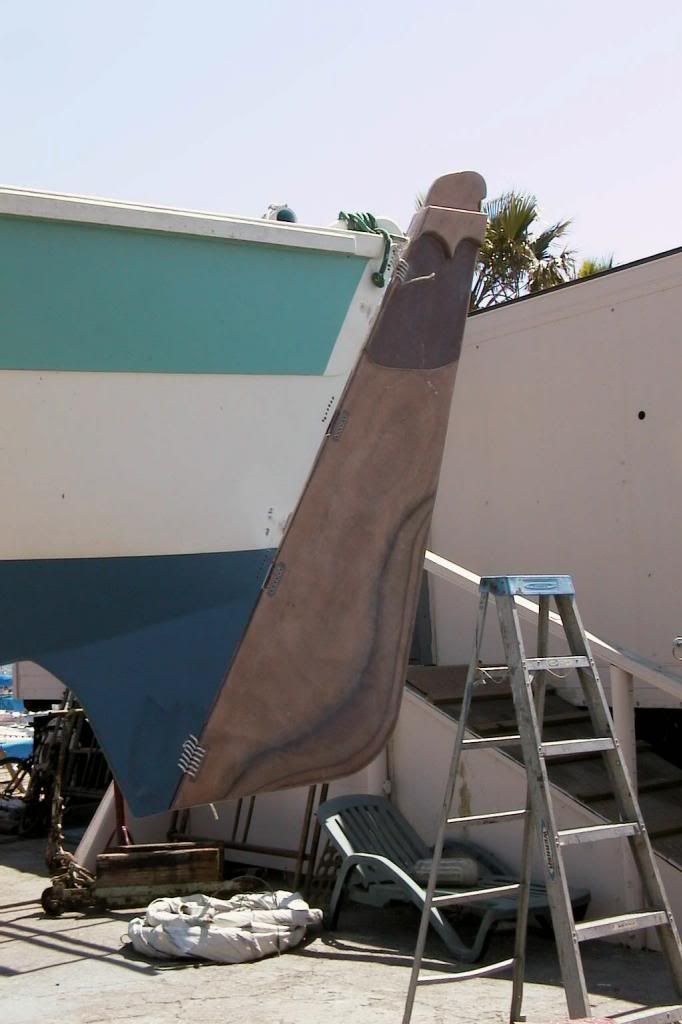A Photo & Discussion Forum for Wharram Design Enthusiasts
I have a 40 foot Narai and was considering changing the now worn aluminium bronze rudder fittings for the Tiki style lashings.
I would be interested to read any comments on the life span of the lashings used with the Tiki style lashed on rudders especially with the larger boats like the Tiki 38 and the Tiki 46.
Has anyone experienced any problems or have any other comments?
Don
Views: 1584
Replies to This Discussion
-
Hi Don,
Peace IV has now sailed over 47,000nm with her original rudder lashings which were made exactly as described in the plans. They still look like new and the rudders and ropes appear to have had no damage at all. Peace IV was launched in 2002. Generally we paint the lashings with antifoul whenever we paint the bottom. So, it works for us just fine!
Ann and Nev
-
Don,
My experience on my 38 is about the same. The boat has been sailed pretty hard for about five years, and the rudder lashings look the same as when they were new. We have seen a little wear on the bearing at the bottom of the post on both surfaces, but I put a Delrin composite wear pad there, and we might have to replace it in another five years. For now it is fine. We differed from the plans by cutting away the areas in the rudder and sternpost, filling them with thickened epoxy, glassing over the filled cutouts, and then drilling the holes for the lashings in the epoxy. In retrospect, I think this is probably overkill, and epoxying the holes and then setting the lashings with 4000 would have been fine.
I like the lashings because you can see if anything is wrong and replacement of the lashings (should you ever need to) can be done with materials you can find easily (and locally). We used ordinary double braid dacron line and I don't see any need to use anything more exotic (or expensive).
Two things: they work best if the join between the rudder and sternpost matches as perfectly as you can get it (both surfaces straight with no bumps to minimize the gap between the two), and you get them as tight as possible when putting them on. We used a vicegrip to pull each one through and a second vicegrip to lock the lashing at the hole and hold it while we threaded the next hole. At the end we tied an overhand knot as close to the hole as we could, then tied another overhand knot between the rudder and the first knot, then another knot inside the first two, and so on until the lashing was as tight as we could get it. (Each knot tightens it a little.) Then we epoxied the last knot, and cut the others away on the lashings in the water, leaving the ones above the waterline as they were.
You might consult with Hanneke about this as I'm sure others have done the same thing. The sternposts on the classic designs are larger and more rounded, and it may be more difficult to get them to match up with the rudder unless you add an external sternpost to mount the lashings.
Ron
-
Many thanks for your replies. That is excellent that your lashings have lasted 47,000 nm Ann and Nev .
Thanks fo your practical advice Ron. Yes I will have to glue and fasten an outer thinner stern post to take the lashings. Should save quite a lot of weight too in the stern with no metal fittings.
Don
-
As is general in this discussion, mine also look great after 10 years, and you can change them anytime though, just by jumping into the water. just take a UV resistant material and make sure (same as Ron suggest) that when you bore the holes , made them larger and fill them with epoxy so later you can make a smaller diameter hole to fit the rope, in my case the rope is 8mm not sure what kind of rope is it, it came with the boat.... i was painting the boat this year, and I took extra care with the rudder lashes and covered all with 3M 4200 sealant and then 3 or 4 layers of antifouling to avoid the barnicles... i guess you know all this already but repeat it wont hurt. one more detail..... the rudder itself has a foot that rest in a plastic pad , the white type (i think is Delrin but not sure) that is used as guides in other industries and has high abrasion resistance.. that foot makes that the rudder weight act in that point and not transferred to the lashings....
-
Many thanks Kim for the excellent photographs and Alex for your comment s and advice. It is all good news.
Don
© 2025 Created by Budget Boater.
Powered by
![]()


